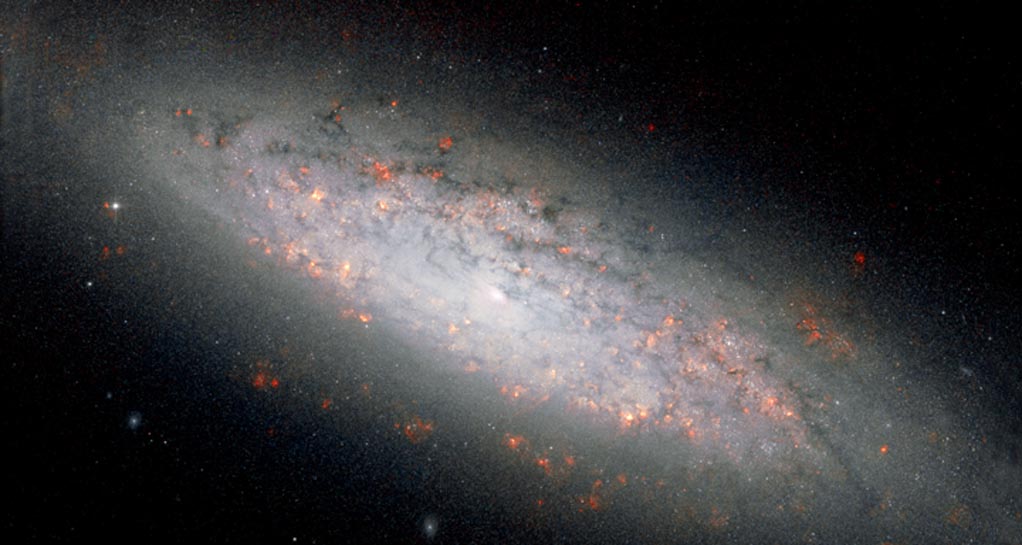
Spiral Galaxy
: RA 17h 49m 25.63s Dec 70° 8' 36.87"
Draco
17 million light years
3.27 x 1.84 arcminutes
North is 125.2° left of vertical
ESA/Hubble and NASA
November 29, 2010
2015 Image: G1523
ABOUT THIS IMAGE:
Fresh starbirth infuses the galaxy NGC 6503 with a vital pink glow in this image from the NASA/ESA Hubble Space Telescope. This galaxy, a smaller version of the Milky Way, is perched near a great void in space where few other galaxies reside.
This new image from Hubble's Advanced Camera for Surveys displays, with particular clarity, the pink-colored puffs marking where stars have recently formed in NGC 6503's swirling spiral arms. Although structurally similar to the Milky Way, the disc of NGC 6503 spans just 30 000 light-years, or just about a third of the size of the Milky Way, leading astronomers to classify NGC 6503 as a dwarf spiral galaxy.
NGC 6503 lies approximately 17 million light-years away in the constellation of Draco (the Dragon). The German astronomer Arthur Auwers discovered this galaxy in July 1854 in a region of space where few other luminous bodies have been found.
NGC 6503 sits at the edge of a giant, hollowed-out region of space called the Local Void. The Hercules and Coma galaxy clusters, as well as our own Local Group of galaxies, circumscribe this vast, sparsely populated region. Estimates for the void's diameter vary from 30 million to more than 150 million light-years - so NGC 6503 does not have a lot of galactic company in its immediate vicinity.
The isolation of NGC 6503 inspired the stargazer Stephen James O'Meara to name it the Lost-In-Space Galaxy in his book Hidden Treasures.
This
Hubble image was created from exposures taken with the Wide Field Channel
of the Advanced Camera for Surveys. The filters were unusual, which explains
the peculiar color balance of this picture. The red coloration derives
from a 28-minute exposure through a filter that just allows the emission
from hydrogen gas (F658N) to pass and which reveals the glowing clouds
of gas associated with star-forming regions. This was combined with a
12-minute exposure through a near-infrared filter (F814W), which was colored
blue for contrast. The field of view is 3.3 by 1.8 arcminutes.